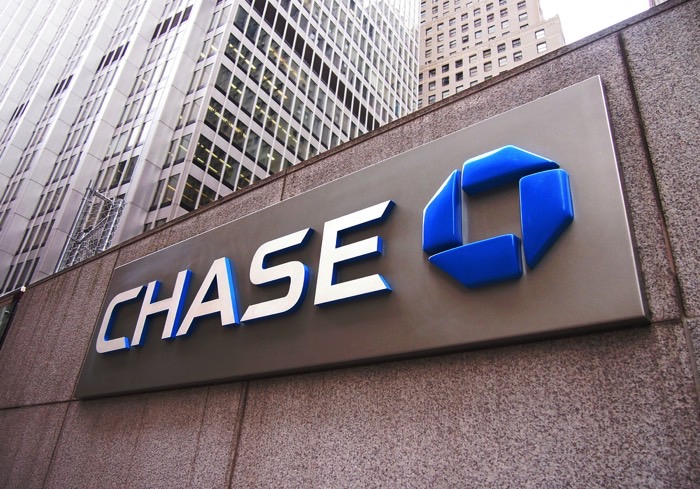
Halfway through the year when JPMorgan Chase expects to layoff around 5,000 people, JPMorgan Chase’s CEO Jamie Dimon suggested during Chase earnings call yesterday (July 14) that doesn’t necessarily mean that the bank’s physical footprint will be shrinking.
In fact, it could be that Chase is looking at bricks-and-mortar expansion in a whole new way.
“We are thinking about attacking a new city for the first time — in a major way,” Dimon said.
He stopped short of elaborating on what “major” plans were in store for Chase’s newest city, but he did share a bit more about how Chase will balance its physical footprint within the digital revolution that all banks have been forced to embrace. He emphasized that Chase does not have a one-size-fits-all approach to determining how, when and where branches are shuffled.
“You have to have the right footprint,” Dimon said. “Adding in new communities, subtracting in some. Having the branches adjust to the new reality of getting bigger and getting smaller in some occasions. We’re not getting smaller because we’re guessing. We’re getting smaller because there’s less of a need for operations in branches now. People are doing far more on mobile phones like that. So we actually do it city by city. We don’t set an overall guideline saying you have to do X, Y and Z.”
Of course, like most major banks, JPMC has focused its efforts on balancing branch cutbacks with online investments and that goal was iterated during the earnings call. In fact, CFO Marianne Lake — who just last quarter became a more dominant voice in the analyst earnings calls — shared Chase’s perspective that balancing where to invest in branches and how to invest online has very much followed an “omnichannel” approach.
“We have a place for everything in our suite and branches are very important. We’re just going to be evolving them to continue to meet customer needs,” said Lake, emphasizing that this means consolidating branches in some cities and combining in others.
Lake said consolidating means evaluating what regions make sense to combine, and which regions don’t make sense for Chase to operate in. That could mean moving into areas with higher density of affluence, Lake said. It also means transforming more services toward automation in order to lower costs and embrace the evolution in customer preferences.
“We’re also improving the profitability of highly transactional customers,” Lake said, commenting on the results of seeing customers shift toward mobile.
JPMC mobile investments are not hard to understand. JPMC now has more than 21 million active mobile customers, which is up 22 percent on the year. Chase just recently implemented TouchID, which enables customers to quickly login to the Chase mobile app.
Overall on the consumer and business banking side, deposits were up 9 percent, on average, to 10.1 billion and credit card sales volume was up 7 percent. Merchant processing volume was also up 12 percent on the year to $234.1 billion, and up 6 percent on the quarter.
Dimon specifically mentioned Chase Paymentech as one aspect of the company that’s seeing strong growth — growth that he suggested is outpacing the trends seen in the industry.
“We’re also signing people with Chase Paymentech combined with ChaseNet, we’re running real volume across it, and we’re signing up a lot of folks that act for ChasePay. So the strategy of ours is kind of coming to provision and we hope it will be a good driver,” Dimon said.
As for JPMC’s quarterly results, the bank beat out expectations and had a 5.2 percent profit increase to $6.29 billion, which is up from the $5.98 billion profit seen in 2014’s Q2 results. Net revenue, however, saw a 3 percent decrease from the year prior to roughly $24.53 billion.
“Our company had strong results this quarter, and each of our businesses performed well, with broad and consistent underlying growth. This quarter was another example of the power of our platform and risk discipline, and of being there for our clients – as we always are – in good times and in volatile markets,” Dimon said in the prepared earnings release.
“We are focused on executing on our commitments and we’ve made good progress this quarter, including meeting regulatory requirements, reducing non-operating deposits, and adding to our capital. We are also on target to deliver on our expense commitments. We continue to add value to our customers, clients and communities, and, as always, we operate with fortress principles,” he continued.
Other noteworthy figures from the quarter included the dip in legal costs from last year’s Q2, when JPMorgan was in the hot seat for regulatory penalties. JPMC’s Q2 legal costs rang in at $291 million, which was a 57 percent drop from last year’s Q2, when the company shelled out $669 million.
JPMC’s second-quarter earnings call offered a noticeable change in focus from the previous two, as Dimon and Lake were able to focus more on the financial aspects and less on the regulatory nuances that found their way into the past couple earnings calls. Instead of being on the defensive about why JPMorgan and Chase made more sense together, there was less chatter about why banks were under assault — as Dimon had rattled off in Q4 in January — and more talk on financial specifics. Even in Q1, comments about regulators made their way into the earnings call.
“We like to tell the whole truth, nothing but the truth — the good, the bad and the ugly,” Dimon said, adding that analysts shouldn’t “read too much into it” if he didn’t show up during analysts calls.
Luckily for Dimon, Q2 fell into the “good” category.